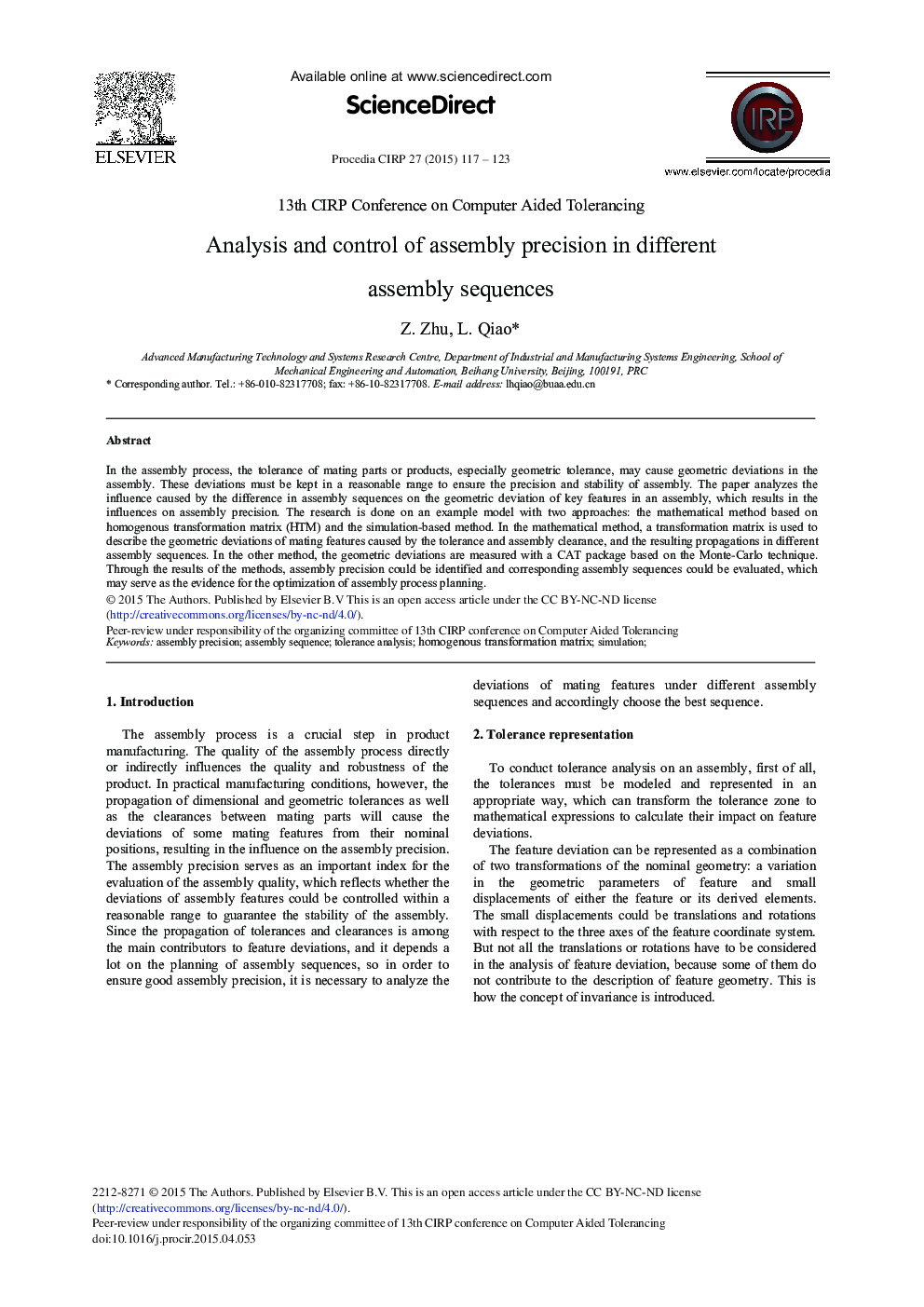| Article ID | Journal | Published Year | Pages | File Type |
|---|---|---|---|---|
| 1700103 | Procedia CIRP | 2015 | 7 Pages |
In the assembly process, the tolerance of mating parts or products, especially geometric tolerance, may cause geometric deviations in the assembly. These deviations must be kept in a reasonable range to ensure the precision and stability of assembly. The paper analyzes the influence caused by the difference in assembly sequences on the geometric deviation of key features in an assembly, which results in the influences on assembly precision. The research is done on an example model with two approaches: the mathematical method based on homogenous transformation matrix (HTM) and the simulation-based method. In the mathematical method, a transformation matrix is used to describe the geometric deviations of mating features caused by the tolerance and assembly clearance, and the resulting propagations in different assembly sequences. In the other method, the geometric deviations are measured with a CAT package based on the Monte-Carlo technique. Through the results of the methods, assembly precision could be identified and corresponding assembly sequences could be evaluated, which may serve as the evidence for the optimization assembly process planning.
